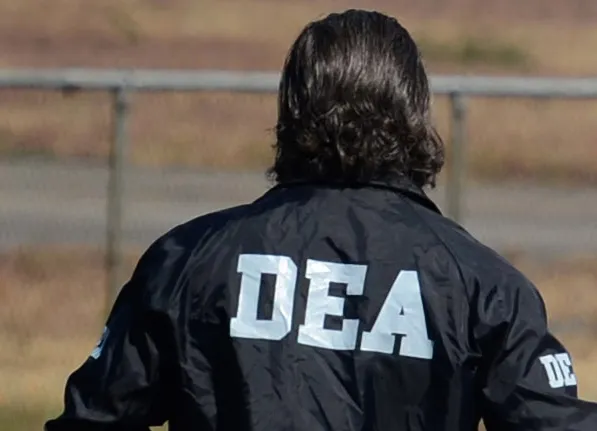Ensuring compliance with DEA regulations is a top priority for any organization handling controlled substances, whether it’s a hospital, EMS agency, pediatric organization, or other healthcare provider. This DEA inspection compliance guide will help organizations understand the requirements set by the DEA, which conducts routine and unannounced inspections to prevent drug diversion, ensure secure narcotics storage, and enforce controlled substance management. Failing to meet these requirements can lead to severe penalties, including fines, legal action, and potential loss of DEA registration.
This guide will walk you through what to expect during a DEA inspection, how to prepare, and key strategies to prevent drug diversion—all while leveraging the latest in narcotics security solutions to ensure compliance.
What Triggers a DEA Inspection?
A DEA inspection can be triggered by several factors, including:
- Scheduled Inspections – Routine checks to ensure continued compliance.
- Theft or Loss Reports – If controlled substances go missing, the DEA will investigate.
- Patient Complaints – Concerns about the handling or administration of narcotics can prompt an inspection.
- Suspicious Order Reports – Large or unusual orders of controlled substances may raise red flags.
- Record Discrepancies – Inconsistent narcotics storage audit trails or commingled documentation can prompt scrutiny.
- High-Volume Prescribing – Pharmacies or medical providers prescribing disproportionate volumes of narcotics may face additional scrutiny.
Given the unpredictability of inspections, compliance with DEA regulations should be an ongoing process, not just a reaction to an impending audit.
What to Expect During a DEA Inspection
A DEA compliance audit follows a structured process:
1. Notice of Inspection
DEA agents will present a “Notice of Inspection” (DEA Form 82), officially marking the start of the inspection.
2. Initial Meeting with Management
The DEA will meet with leadership and those responsible for narcotics security to outline the process and expectations.
3. Facility Tour
Inspectors will assess areas where narcotics are stored, including hospital medication safes, EMS truck narcotics security solutions, and pharmaceutical inventory protection measures.
4. Review of SOPs (Standard Operating Procedures)
The DEA will examine whether an organization has clear, enforceable policies for secure narcotics storage, authorized personnel narcotics access, and compliance with DEA regulations.
5. Document Review
Inspectors will request essential records, including:
- Power of Attorney forms
- Key control logs (for tracking who accessed narcotics safes)
- Spill logs and incident reports
- Biennial inventory reports
- DEA-222 forms (for Schedule II substances)
- Disposal records for expired or unused narcotics
6. Physical Inventory Count
A full audit of controlled substances on hand will be conducted. This ensures that medication safe compliance is being met and that all doses are properly accounted for.
7. Closing Discussion
At the end of the inspection, DEA agents will provide findings, clarify discrepancies, and answer questions. If violations are found, corrective actions must be taken immediately.
Preventing Drug Diversion: Key Strategies for DEA Compliance
1. Upgrade to DEA-Compliant Security Solutions
Using DEA-compliant narcotics safes with wireless access control for safes significantly enhances security. Solutions like NarcLock provide:
- No-wire narcotics safe solutions– Eliminating the need for wiring or Wi-Fi in emergency vehicles.
- Retrofit access control– Upgrading existing safes with advanced narcotics access control technology.
- Detailed audit trails for narcotics– Automatically tracking every access attempt, inventory update, and disposal record.
2. Implement Strict Recordkeeping Practices
Maintain up-to-date, complete, and easily retrievable records. Organizations must track:
- All controlled substances received, stored, and dispensed.
- Inventory reconciliations and DEA-222 forms.
- Narcotics storage audit trails to prove compliance.
3. Restrict and Monitor Access
- Only authorized personnel should have access to narcotics.
- Use biometric or electronic key control systems for tracking.
- Implement emergency vehicle narcotics security measures for ambulances and EMS trucks.
4. Conduct Regular Internal Audits
Perform self-audits to identify security gaps and compliance issues before an official DEA inspection.
5. Educate and Train Staff
- Train employees on proper handling, reporting obligations, and drug diversion prevention.
- Implement progressive discipline policies for violations.
- Require mandatory reporting of discrepancies in narcotics inventory.
Ensuring Compliance with NarcLock: A Smarter, Cost-Effective Solution
Traditional security methods often require hardwired systems and dedicated Wi-Fi, making installation costly and complex. NarcLock eliminates these barriers by offering a completely wireless solution that ensures DEA compliance without massive installation fees or wiring.
With NarcLock, organizations can:
✅ Enhance DEA-compliant narcotics storage without expensive retrofits.
✅ Maintain secure, audit-ready access logs for inspections.
✅ Eliminate the need for wiring or Wi-Fi in EMS vehicles and hospitals.
✅ Enable remote access control for narcotics storage.
Take proactive steps today! Strengthen your narcotics security system and ensure seamless DEA compliance with NarcLock’s advanced access control technology.
For more information, contact NarcLock today.
Want to secure more than just enclosures? Check out TEC Solutions



